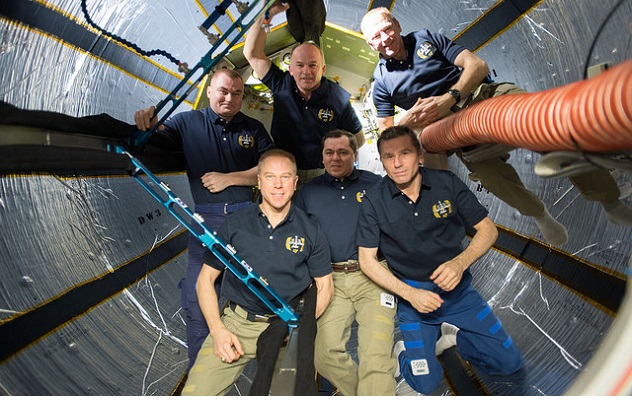
ESA astronaut Paolo Nespoli described the journey back in the Soyuz capsule as feeling like “a huge car crash, at best”.
Tim will be subject to high g-forces and very warm conditions on re-entry, before landing with his two crew-mates back on Earth.
So what can you do in class to learn more about Tim’s journey and life back on terra-firma?
Here are a few ideas and resources to get you started:
- Explore the process of returning to Earth in this video, children can identify the different stages and write as if they are astronauts returning. The last part of Living in Space in this resource provides a child-friendly summary of an astronauts return to Earth.
- Carry out a hot seating activity where a child takes the role of an astronaut answering questions about their return to Earth. This could then be developed into a creative writing exercise.
- Get making their own parachute to model the final descent module using the soft landing activity in this resource - a great opportunity for working scientifically and applying ideas about forces.
- Think about the view Tim will have as he returns and link in with some geography activities about looking at the Earth from space.
- Tim is due to land in Kazakh Steppe in central Asia on Saturday 18 June 2016. This is in a different time zone to the UK. Try the activity about time zones at the end of Chapter 4: Living in Space in this resource.
- Astronauts are at risk from UV light, as they are above the Earth’s protective ozone layer, so need to wear protective clothing when working outside the ISS. Investigate which materials are best at blocking UV light in these activities using UV sensitive beads, easily sourced online - a great one to link to being safe in the sun.
- Prepare interview questions for Tim about his mission and return to Earth, others could research answers. Journalists can then write up their newspaper reports on the mission, with pictures of course.
- Research how astronauts learn to live on Earth again after living in micro-gravity conditions.
Using space as a context for learning across the curriculum will always provide a great context for learning, for further ideas and inspiration take a look at the Tim Peake page on ESERO-UK’s site and find out more about activities schools have been carrying out.
